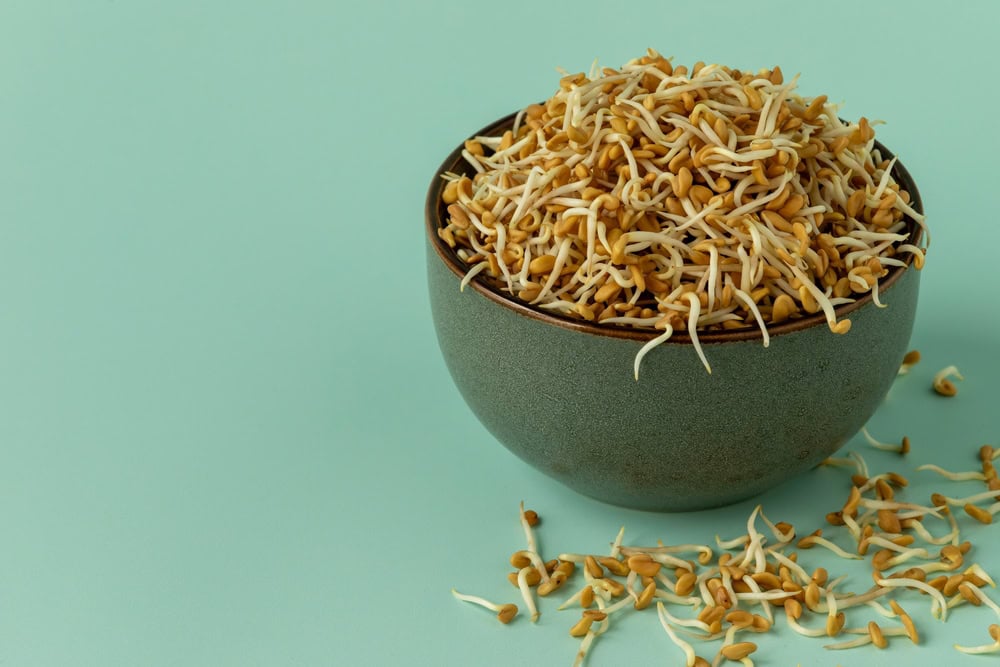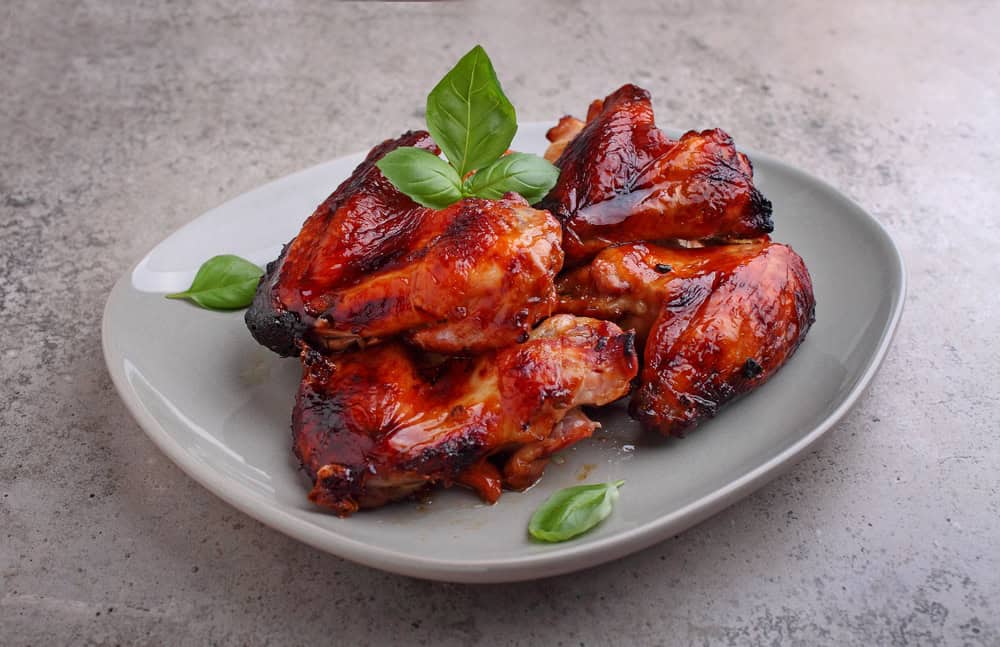
After a long, hectic day, juggling work calls, traffic, and endless to-do lists, dinner time often feels like a battle between your tired body and your hungry stomach. You want something that’s comforting yet light, tasty yet healthy, and above all, quick.
If you’ve been skipping dinner or surviving on takeout, here’s your wake-up call. Dinner doesn’t have to be boring or time-consuming, and it definitely doesn’t have to mean plain salads or dry oats. With a little creativity, you can whip up protein-packed Indian dinners in under 30 minutes that satisfy your cravings and nourish your body.
Here’s the thing: protein isn’t just for gym-goers or fitness enthusiasts. It’s the building block your body needs to repair, recover, and stay strong. And with Indian cuisine’s vast pantry, from lentils to paneer, sprouts to tofu, hitting your protein goals can actually be delicious.
So, let’s dig into seven easy, wholesome, Indian-style dinners that are rich in protein, big on flavour, and kind on your schedule.
1. Paneer Bhurji with Multigrain Rotis

There’s something deeply satisfying about the aroma of paneer sizzling with onions, tomatoes, and green chilies. Paneer bhurji is that perfect weekday hero, hearty, flavorful, and loaded with vegetarian protein.
Why it works: Paneer is one of the richest vegetarian sources of protein, giving you around 18 grams per 100 grams. Paired with fiber-rich multigrain rotis, it makes a balanced dinner that keeps you full longer.
Quick tip: Add spinach or green peas for extra nutrition. If you’re short on time, crumble paneer directly into the pan and cook for 10 minutes; dinner is done.
Upgrade it: Serve with a side of fresh salad or a small bowl of curd for added calcium and probiotics.
2. Moong Dal Khichdi, The Comfort Protein Bowl

There’s a reason every Indian household turns to khichdi when someone’s feeling under the weather. But beyond being comfort food, moong dal khichdi is a protein-rich, easily digestible meal that’s perfect for dinner.
Why it works: Yellow moong dal is light on the stomach yet high in plant-based protein. It’s also packed with potassium and magnesium, minerals that support muscle recovery and sleep.
Make it interesting: Temper your khichdi with ghee, cumin, and asafoetida for that classic flavor. Add veggies like carrots, peas, or beans to make it a complete meal.
Protein boost tip: Mix moong dal with masoor dal or add a handful of soya granules while cooking. You’ll raise the protein content without changing the taste.
3. Sprouted Moong Salad with Chatpata Masala

On days you don’t feel like cooking anything elaborate, sprouted moong salad is a lifesaver. It’s crunchy, tangy, refreshing, and bursting with protein and fiber.
Why it works: Sprouts are live foods; they’re rich in enzymes, vitamins, and amino acids. Sprouted moong beans provide 24 grams of protein per 100 grams, making this salad a powerful light dinner option.
How to make: Mix boiled or raw sprouts with finely chopped onion, cucumber, tomato, and coriander. Add lemon juice, black salt, and chaat masala for a desi zing.
Bonus tip: Toss in boiled chickpeas, pomegranate seeds, or paneer cubes for extra punch.
Pair it with: A bowl of warm soup or buttermilk if you want something more filling.
4. Masoor Dal Tadka with Brown Rice

The humble dal-chawal never goes out of style, and it’s one of India’s best sources of plant protein. Among all dals, masoor dal (red lentils) stands out for its quick cooking time and high protein content.
Why it works: Masoor dal is loaded with protein, iron, and folate. Combined with brown rice, it gives you a complete amino acid profile, similar to animal protein.
Quick recipe: Pressure cook the dal with turmeric and salt. Temper with ghee, garlic, cumin, and red chili for a comforting, aromatic meal ready in 20 minutes.
Upgrade it: Add spinach or methi leaves to the dal to enhance both the taste and nutrition.
Pro tip: For a modern twist, serve your dal-tadka bowl-style, top with sautéed veggies and a drizzle of lemon juice.
5. Grilled Tandoori Chicken with Quinoa or Millet

For non-vegetarians looking for a high-protein dinner that doesn’t feel heavy, this one’s a winner. Grilled tandoori chicken combines the smoky goodness of Indian spices with the clean nutrition of a lean protein.
Why it works: Chicken breast provides around 30 grams of protein per 100 grams, making it one of the most efficient protein sources. Pairing it with quinoa or millet (like jowar or bajra) adds fiber and micronutrients.
How to make: Marinate chicken in curd, ginger-garlic paste, lemon juice, and spices like paprika, turmeric, and garam masala. Grill or air-fry for 20 minutes.
Pro tip: Use leftover tandoori chicken the next day in wraps or salads, zero wastage, double satisfaction.
6. Besan Chilla with Hung Curd Dip

Quick, filling, and versatile, besan chilla is the ultimate 10-minute protein meal. Made from gram flour (chickpea flour), it’s naturally gluten-free and high in protein and fiber.
Why it works: Besan contains around 22 grams of protein per 100 grams and is rich in iron. You can add grated vegetables like carrots, onions, or spinach for more nutrients.
How to make: Mix besan with water, turmeric, salt, and chili. Pour onto a hot tawa like a pancake and cook till golden.
Serve with: A bowl of hung curd dip (mixed with mint and roasted cumin), which adds a cooling balance and an extra protein boost.
Fun twist: Make it into a wrap by rolling up the chilla with sautéed veggies inside.
7. Soya Chunk Curry with Jeera Rice

Last but not least, soya chunks are every vegetarian’s best friend when it comes to protein. They’re affordable, easily available, and incredibly versatile.
Why it works: Soy chunks have over 50 grams of protein per 100 grams (after rehydration), which is higher than most meats. They also help in maintaining muscle mass and managing weight.
Quick recipe: Soak soya chunks in hot water, squeeze out excess water, and cook them in a curry with onions, tomatoes, and spices. Serve with jeera rice or millets for a satisfying dinner.
Pro tip: Add a little curd or coconut milk at the end to make the curry creamy without heavy cream.
Bonus: Simple Add-ons for More Protein
Sometimes, it’s the small tweaks that make a big difference. Here are a few easy ways to sneak in more protein into your dinners:
- Add a spoonful of chia or flax seeds to your soups or salads.
- Snack on a handful of roasted chana while cooking.
- Use Greek yogurt or hung curd instead of mayonnaise in dips.
- Top your dals or khichdi with toasted nuts or seeds for crunch and nutrition.
The Takeaway
Eating healthy doesn’t have to mean complicated recipes or bland meals. In fact, most of our traditional Indian foods, dals, paneer, curd, lentils, and sprouts, are already protein-rich; we just need to bring them back into our daily routines.
The beauty of Indian cuisine lies in its balance, flavor meets function, and nourishment blends with nostalgia. Whether you’re a vegetarian, vegan, or non-veg lover, there’s always a way to make your dinner more satisfying and protein-packed.
So tonight, skip the takeout and try one of these quick recipes. Light a candle, play some music, and enjoy the process of cooking for yourself. Because good food doesn’t just fill your stomach, it nourishes your body, calms your mind, and reminds you to slow down.
After all, dinner isn’t just the last meal of the day; it’s your body’s way of saying thank you for getting through it.
Frequently Asked Questions (FAQs)
How much protein do I need at dinner?
It depends on your body weight and activity level, but ideally, aim for 20–30 grams of protein at dinner. This helps with overnight muscle recovery and keeps you full longer.
Are vegetarian Indian meals enough to meet protein goals?
Absolutely! Indian vegetarian foods like dals, paneer, sprouts, tofu, besan, and curd are all great protein sources. Combining grains (like rice) with lentils or legumes gives you a complete protein profile.
Is it okay to have protein at night?
Yes! Having a protein-rich meal at night supports muscle repair while you sleep. Just avoid heavy, greasy preparations, go for light curries, grilled items, or soups.
What’s the best source of protein for vegetarians in India?
Some of the best vegetarian protein options include paneer, lentils, chickpeas, tofu, soya chunks, and Greek yogurt. Sprouted beans and nuts also add a nice protein boost.
Can I meal-prep these recipes for the week?
Definitely! Dishes like paneer bhurji, moong dal, or grilled chicken can be made in advance and stored in the fridge for 2–3 days. Just reheat and pair with fresh rotis or rice when ready to eat.
Recommended Reads
Beyond the Buzz: A Doctor’s Take on 6 Indian Fruits That Are True Nutrition Superstars
Pour, Rinse, Glow: 6 Rice Water Beauty Hacks You Wish You Knew Sooner
(The article is written by Mantasha, Executive, Clinical Health & Content, and reviewed by Monalisa Deka, Senior Health Content Editor)